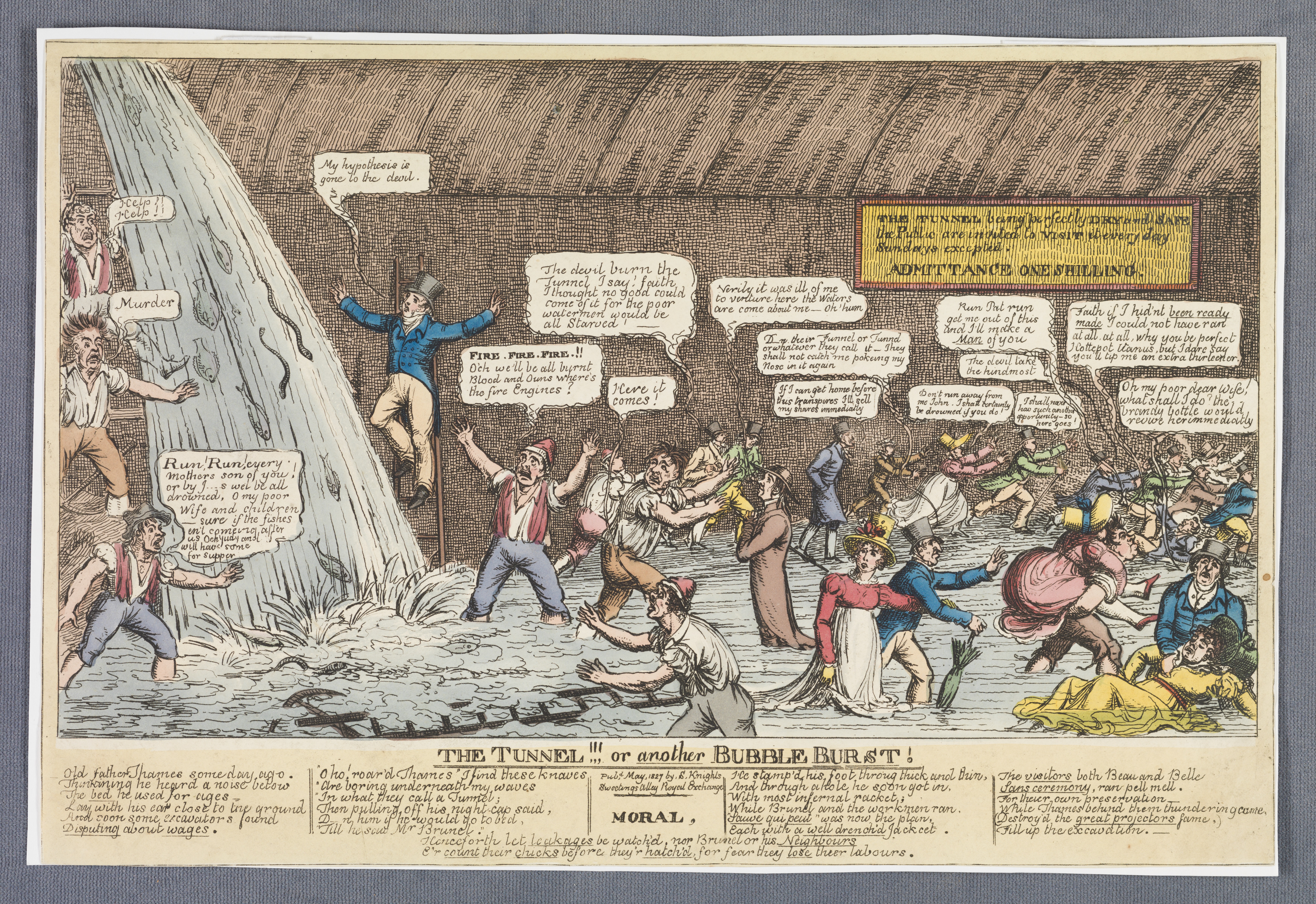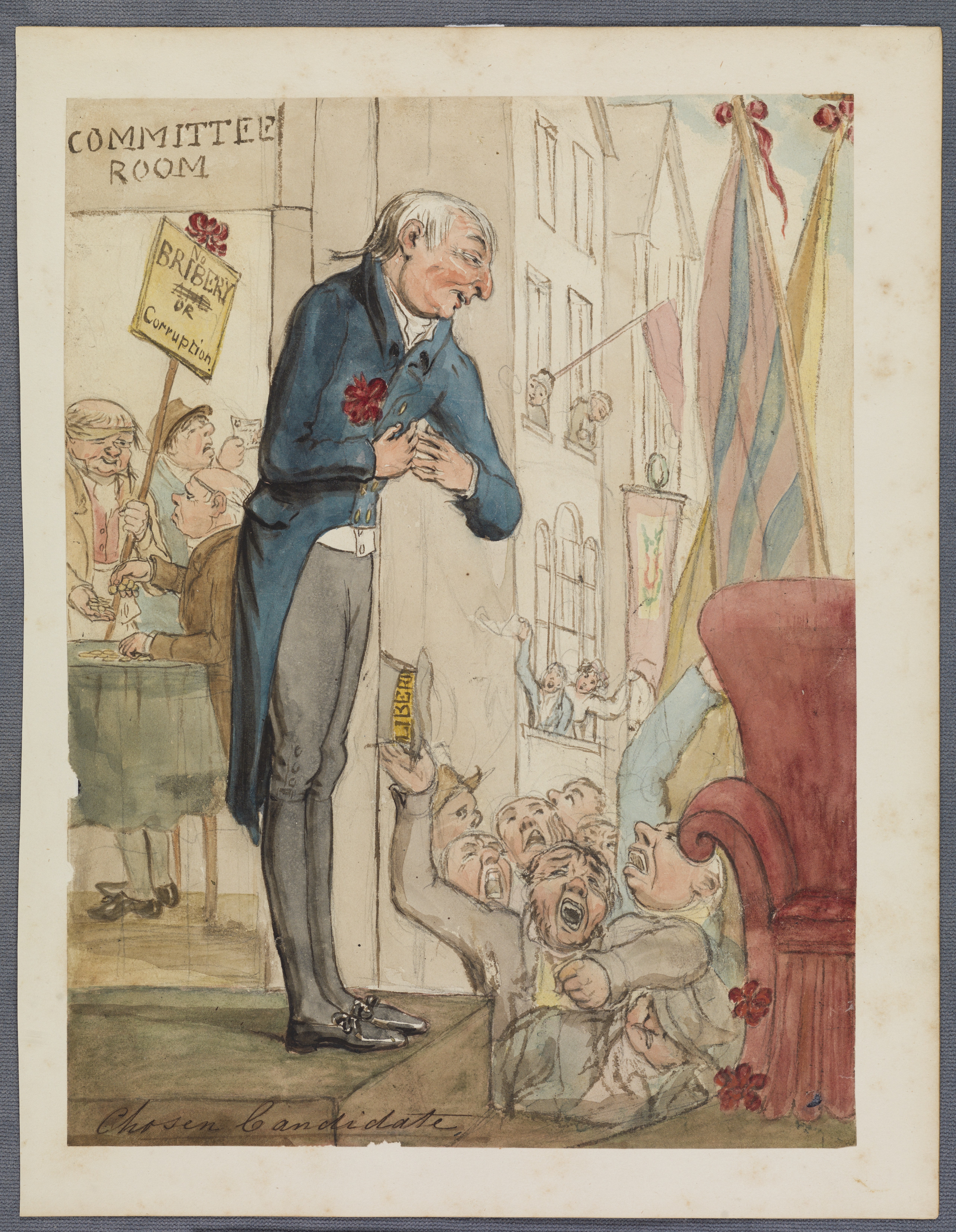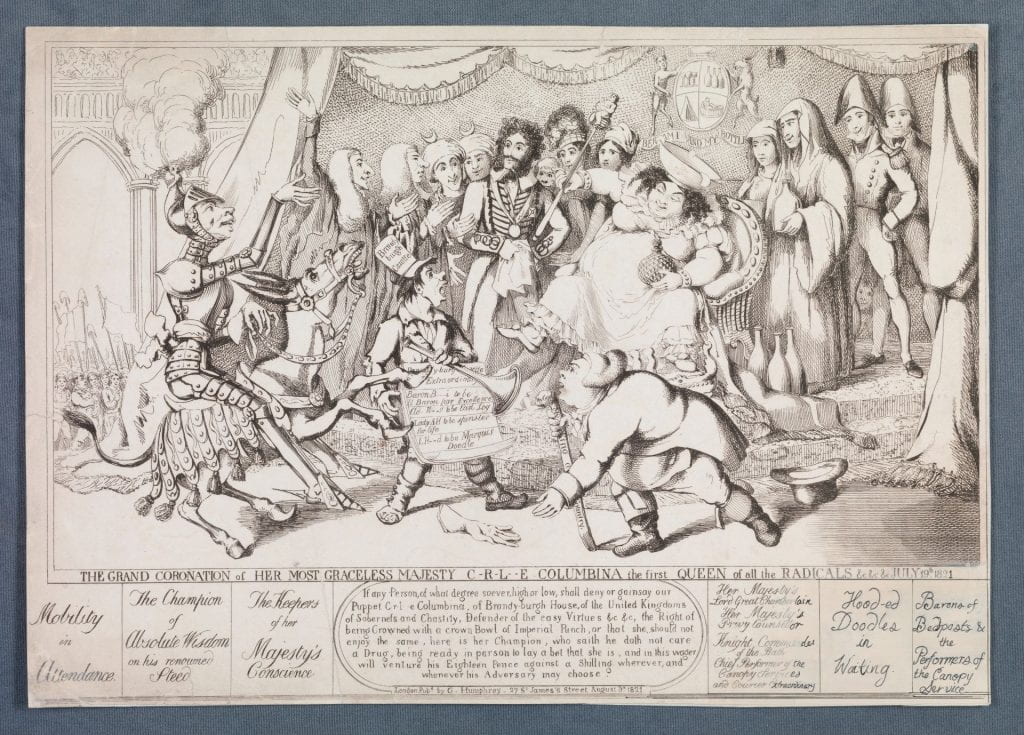
“A burlesque coronation of the Queen. She sits enthroned on a dais, raising her right foot with tipsy joviality. In her right hand as sceptre is a rod topped by a tiny cask which a naked Bacchus bestrides. The orb in her left hand is a decanter; on her head is a tilting punch-bowl. She watches her champion Wood (left) (acting the part of Dymoke, cf. British Museum Satires No. 14193), a grotesque figure in armour on a caparisoned ass (see British Museum Satires No. 14146). He has just thrown down the glove, pulling his braying mount on to its haunches, and looks up with a fatuous stare at the Queen. His helmet is topped by an owl from which clouds of smoke ascend (cf. British Museum Satires No. 14196). John Bull (right), a ‘cit’ wearing an ill-fitting wig and top-boots, stoops to pick up the glove, supporting himself by a cudgel inscribed My God My King a[nd my] Country. Between these two foreground figures stands a ragged newsboy holding his horn, the paper in his cap inscribed Brandy burgh [cf. British Museum Satires No. 14191] Gazette; slung from his shoulders is a large sheaf of his newspaper, Brandyburg Gazette Extraordinary–Baron B…..i to be Il Baron par Excellence–Ad- W – – d to be Earl Log [see British Museum Satires No. 14189]–Lady A H [Anne Hamilton] to be Spinster for Life–L. H – – d to be Marquis Doodle. Attendants are grouped round the Queen on the dais, which is under festooned curtains. These are (left to right): Denman and Brougham, in wig and gown, applauding and gesturing; two turbaned Turks; Bergami, handsome and complacent, at the Queen’s right hand. Slightly behind are a simian face, Lady Anne Hamilton wearing the feathered Scots cap of British Museum Satires No. 14175, and another woman, Italian in appearance (probably Countess Oldi). Behind the Queen’s chair on the right are two hooded figures, the more prominent, who holds a decanter, being Viscount Hood, the other perhaps Keppel Craven. Two naval officers must be Hownam and Flinn. On the canopy of the throne behind the Queen are her arms; the quarterings are wine-glasses, bottles, a tent (see British Museum Satires No. 13818), and a bath containing a tiny figure (see British Museum Satires No. 13819). The supporters are a satyr and a goat; the motto, Bergami and My Bottle [see British Museum Satires No. 14175]. On the extreme left, supported on Gothic arches, is a gallery crowded with ladies, as in Westminster Abbey at the Coronation. On a lower level, seen through the arches of the Abbey, is a dense proletarian crowd with banners, pikes, and caps of Liberty. The characters are indicated by inscriptions divided by vertical lines, as in British Museum Satires No. 14182, and centred by a cartouche. These are (left to right): Mobility in Attendance. The Champion of Absolute Wisdom [see British Museum Satires No. 13899] on his renowned Steed. The Keepers of her Majesty’s Conscience [her Counsel]. Her Majesty’s Lord Great Chamberlain Her Majesty’s Privy Counsellor Knight Commander of the Bath Chief Performer of the Canopy Service and Courier Extraordinary [Bergami]. Hooded Doodles in Waiting [Lord Hood and his companion]. Barons of the Bedposts. Performers of the Canopy Service [the naval officers]. In the cartouche: If any Person of what degree soever, high or low, shall deny or gainsay our Puppet C . r . l . . e Columbina [see British Museum Satires No. 14120] of Brandy-burgh House, of the United Kingdoms of Soberness and Chastity, Defender of the easy Virtues &c &c the Right of being Crowned with a crown Bowl of Imperial Punch, or that she should not enjoy the same, here is her Champion, who saith he doth not care a Drug, being ready in person to lay a bet that she is, and in this wager will venture his Eighteen Pence against a Shilling wherever, and whenever his Adversary may choose.”–British Museum online catalogue.
- Printmaker: Lane, Theodore, 1800-1828, printmaker.
- Title: The grand coronation of Her Most Graceless Majesty C-r-l–e Columbina, the first queen of all the radicals &c &c &c, July 19th, 1821 [graphic].
- Publication: London : Pubd. by G. Humphrey, 27 St. James’s Street, August 6th, 1821.
Catalog Record
821.08.06.01+
Acquired March 2020
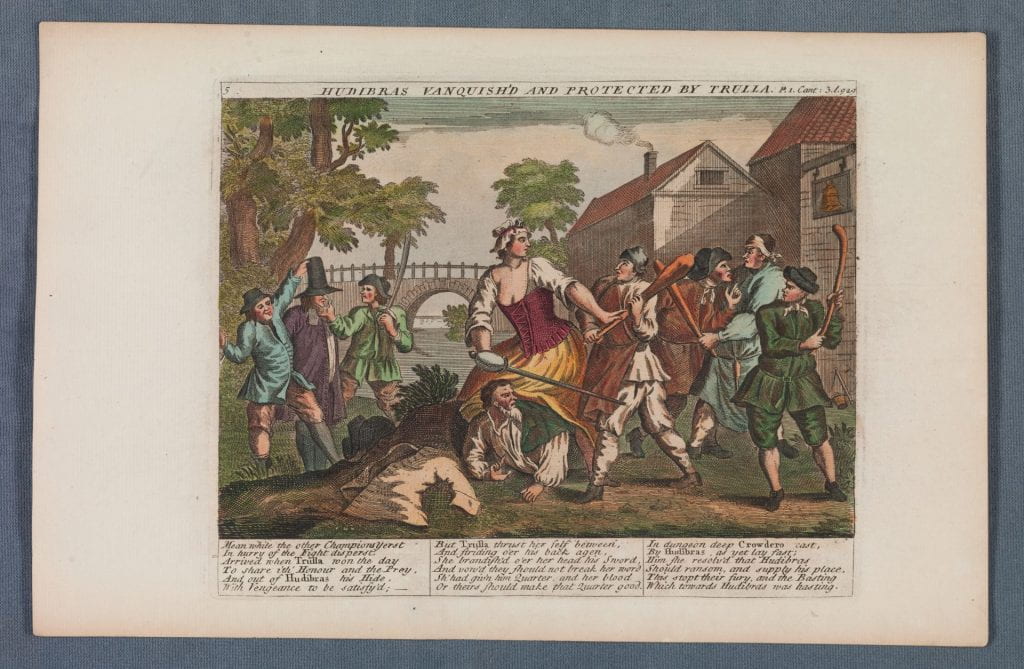

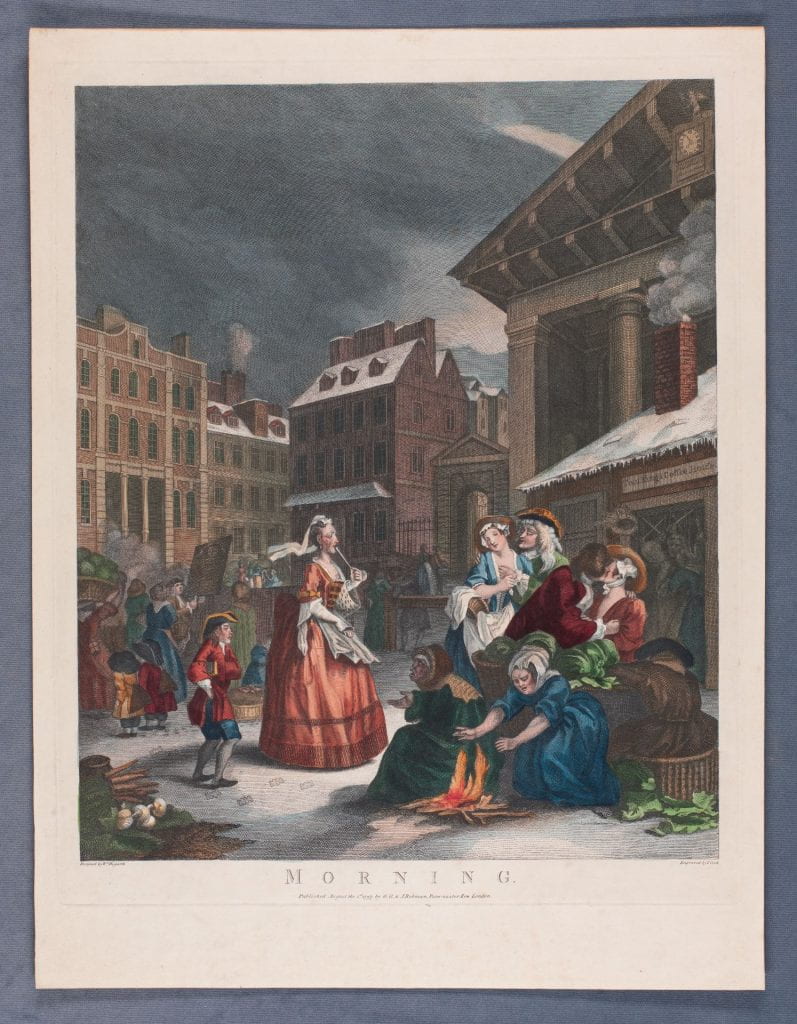
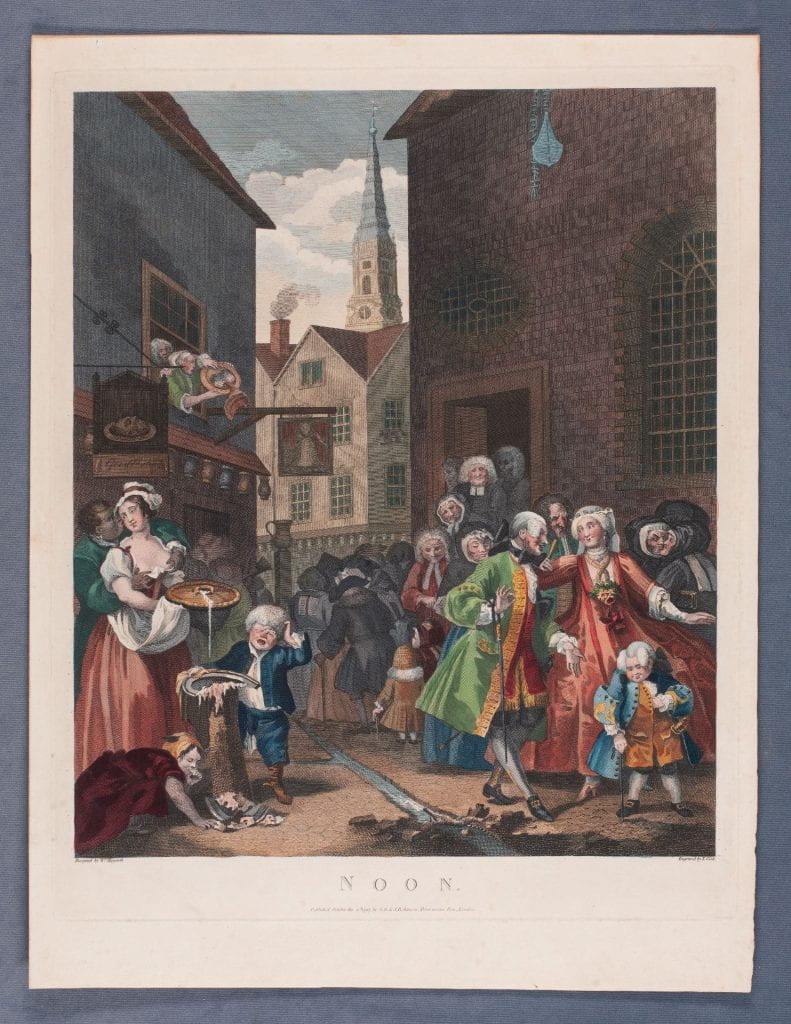

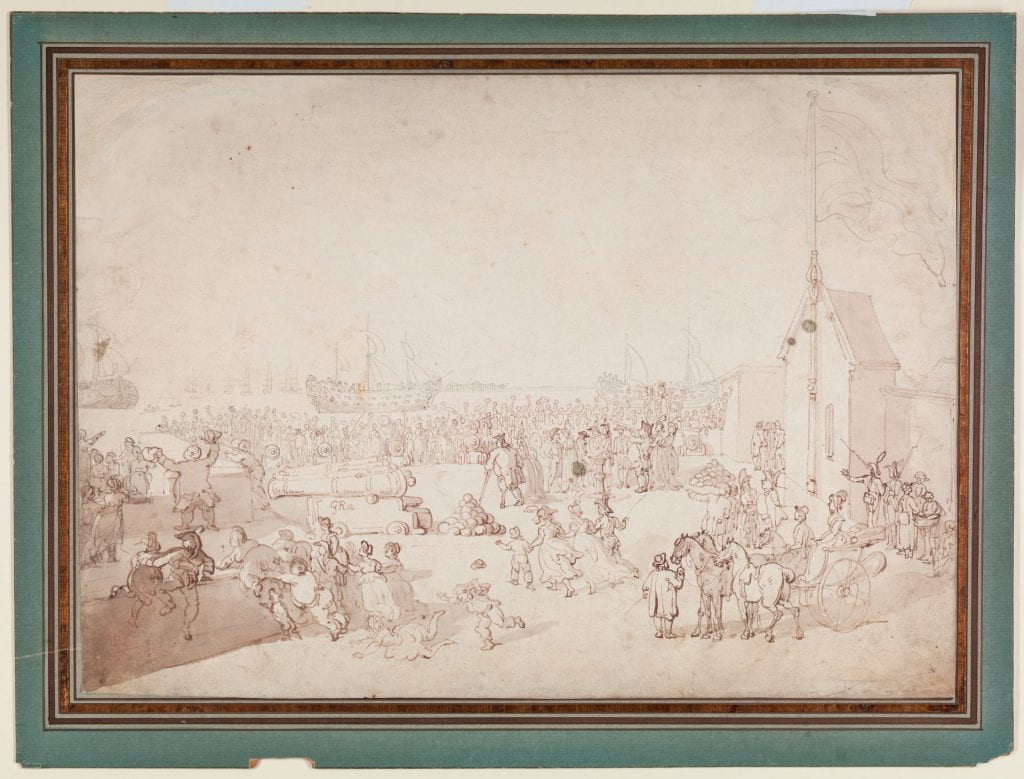 Unsigned; attributed to Rowlandson.
Unsigned; attributed to Rowlandson.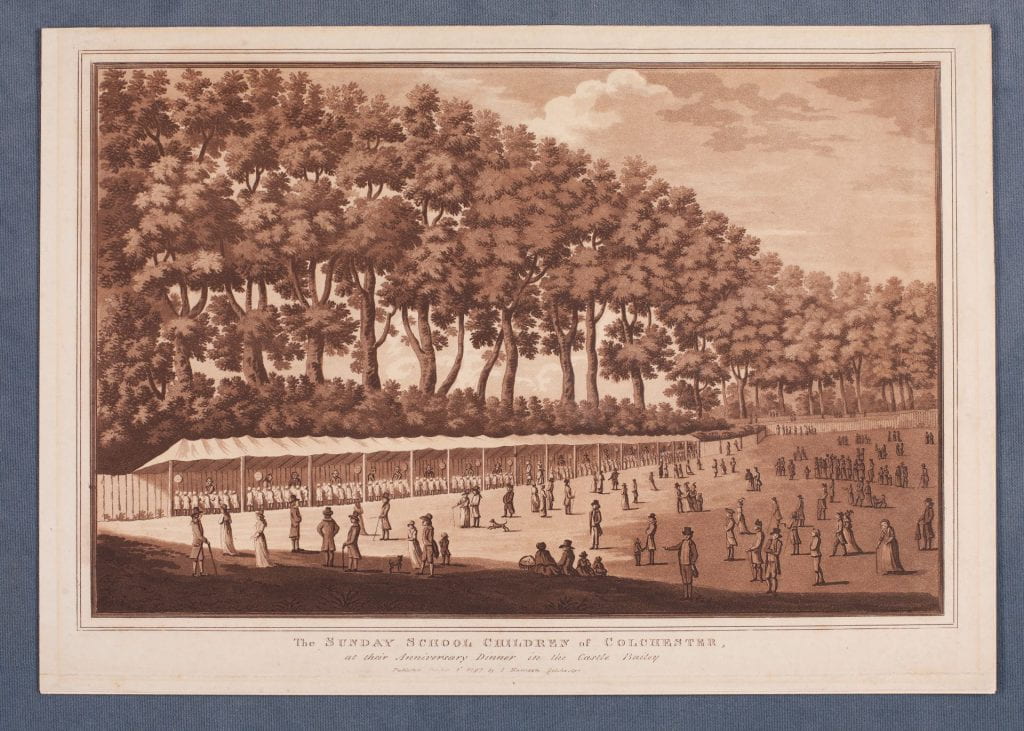
 Broadside poem, with engraving above letterpress text.
Broadside poem, with engraving above letterpress text.
